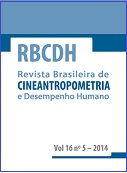Use of sample size calculation in scientific research in Brazilian Physical Education journals
DOI:
https://doi.org/10.1590/1980-0037.2014v16n5p514Abstract
The mistaken use of biostatistics in scientific research involves methodological errors both in the research itself as in its analyses. Among these, the lack of sample size calculation, considered essential for validation and credibility of results, is often found. The aim of the study was to determine how often sample size calculation is used in articles published in Physical Education national journals. The study included only national scientific journals ranked as A1 and B2 by the Coordination of Improvement of Higher Education Personnel (CAPES), which analyzed only articles available in full and published in the period from 2010 to 2012. Review articles, letter to the editor, points of view and original articles that did not perform any statistical analysis were excluded. Approximately 15 % of articles analyzed performed sample size calculation and no difference between these proportions over the years were identified. Differences between Physical Education subareas (education, health and sport) were observed, being lower in sport (p = 0.001) compared to other subareas. Journals classified as B2 showed higher use of sample size calculation in relation to those classified as B1 (p = 0.013) and A2 (p = 0.007). The use of sample size calculation in scientific research published in Physical Education national journals in the period from 2010 to 2012 was not satisfactory, especially in sport subarea. Moreover, no evolution on the use of sample size calculation over the years analyzed was observed.



